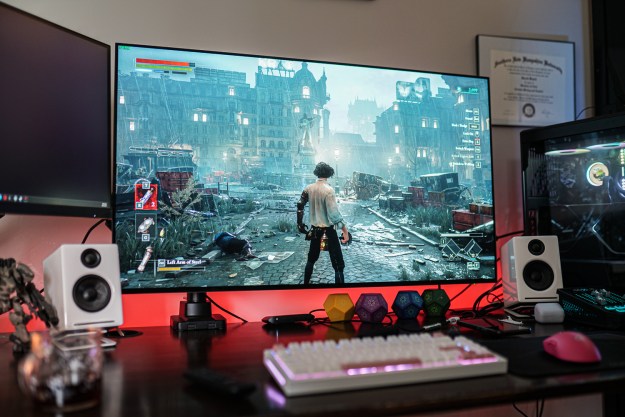Amidst speculation over what Nvidia’s next-generation graphics cards will actually be called and what their performance will be like, the latest rumor is that they could see a general release as soon as July. The first cards to debut will be the Founders Editions, we’re told, with third-party alternatives showing up in August or September.
It’s been more than two years since the original release of Nvidia’s Pascal generation of graphics cards, which first debuted with the GTX 1080 and 1070. Since then we’ve seen prices and availability issues due to various factors, but just as things appear to be getting back under control, we may be set to be blessed with a new-generation of GPUs.
Potentially based on the same core-architecture as Nvidia’s previously released, enterprise Titan V graphics card, the allegedly titled GTX 1180 is said to be ready for a July release, according to Tom’s Hardware sources. If previous generations of new graphics card releases are anything to go by, those Founders Edition cards will be limited in number — especially if cryptocurrency miners are interested, too — and slightly more expensive than the eventual third-party releases, which are expected to show up a month or two later.
Tom’s Hardware sources claimed that Nvidia would send off reference designs of its cards to its graphics cards partners around June 15, which with typical sampling and testing procedures, would see factory overclocked options with advanced cooling available as we head into the last few months of the year. Laptop versions of those same graphics chips are said to be slated for a release before the start of 2019.
The details of the graphics chips at the heart of the new-generation remain frustratingly vague at this time. Part of that confusion comes from Nvidia having previously discussed two future generations of graphics cards: Turing and Volta. While the Titan V was built upon the Volta architecture, it’s not clear if cards aimed at gamers will be part of that lineup, or be built upon a Turing process instead. One is expected to cater to enterprises and potentially cryptocurrency miners, while the other is expected to be built with gamers in mind.
Editors' Recommendations
- AMD’s canceled GPU could have crushed Nvidia
- Nvidia RTX 50-series graphics cards: news, release date, price, and more
- You shouldn’t buy these Nvidia GPUs right now
- What is VSync, and why do you need it?
- How 8GB VRAM GPUs could be made viable again




